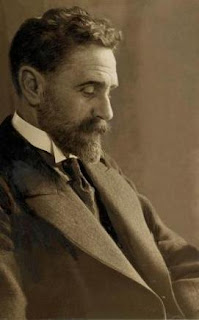Pordenone, Italy – An international and interdisciplinary coalition, organized in the Netherlands under the guidance of the International Network of Museums for Peace (INMP), will enjoy the success of its campaign to restore Wilbur H. Durborough’s 1915 World War I documentary film, On the Firing Line with the Germans, when it premieres this week at the 34th annual Pordenone Silent Film Festival.
 |
Advertisement, Moving Picture World, February 26, 1916 |
NGO’s, museums, researchers and academics became interested in the film when it was discovered to contain rare footage of an international delegation of women (including future Nobel Peace Prize Winner, Jane Addams (the first U.S. woman to win the Nobel Peace Prize), and Dutch suffragist and peace activist Aletta Jacobs). In 1915, this delegation functioned as envoys on a citizen diplomacy mission to end World War I. The mission arose out of the historic 1915 International Women’s Congress in The Hague, The Netherlands – organized by Jacobs and presided over by Addams -- in an effort to end the hostilities of World War I with a process of mediation. Over 1100 women attended this meeting, with the largest delegations coming from the Netherlands and the United States.

Scholars believe that this and other important historical stories can be powerfully told with the restoration of the Durborough Film. “Most people are completely unaware that internationally organized women – although lacking any formal political voice – were bold enough to meet with foreign ministers, chancellors, President Wilson and even The Pope, in an attempt to end World War 1. This film provides an opportunity to tell this important story of diplomatic history and link it to the present. It is also an effective tool by which to educate the public about the development of international law”, said
Hope Elizabeth May, Professor of Philosophy at Central Michigan University, who enlisted the support of U.S. Ambassador for Global Criminal Justice, Stephen J. Rapp, in the campaign to restore the film. “Peace museums expressed strong interest in view of the ongoing cycle of world war commemorations", said historian Marten van Harten, INMP program coordinator and the initiator of the campaign. “Ambassador Rapp’s letter of support made a strong impression on the Library of Congress and helped to shift the balance.”
 |
1915 Delegation for the Women's International League for Peace and Freedom
|
Also joining in the campaign was the
Women’s International League of Peace and Freedom (WILPF), which was formed as the result of the 1915 Hague meeting. WILPF, which is headquartered in Geneva, Switzerland, remains the oldest international women’s peace organization in the world today. In addition to its importance for peace historians and activists, the film also has exceptional cinematographic, historic and educational value. Researcher James Castellan, who has been researching the film and working on its reconstruction since 2001, notes that it is the only existing, essentially complete World War I feature-length documentary film.
The restoration of this historic film, undertaken by the United States Library of Congress, will premiere on October 9, 2015 at 3:50pm in the Teatro Verdi at 15:50, with music by Philip Carli as accompanist. The film will be followed by a Questions and Answers panel at the Hotel Moderno. The panel will include Mr. Mike Mashon of the U.S. Library of Congress restoration team, James Castellan, film researcher / co-author of
American Cinematographers in the Great War (London/John Libbey Publishing 2014), Prof. Hope Elizabeth May of Central Michigan University /The Bertha von Suttner Project, Prof. Giovanna Pagani, Honorary President of WILPF Italia, Mr. Marten van Harten of INMP /Historical Film for Peace Education Project, and Dutch film historian Ron van Dopperen (moderator and co-author of
American Cinematographers in the Great War).
For more information on 100 years of efforts by women to stop war read the
INMP Newsletter.
Monday, October 5, 2015
Contact: Marten van Harten
International Network of Museums for Peace
Email:
martenvanharten.ccs@gmail.com







